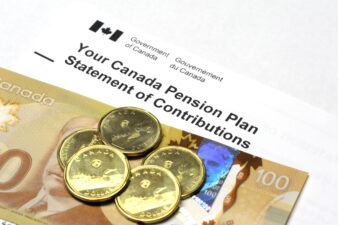While investors look forward to higher dividends from bank stocks, Canada’s banking watchdog isn’t ready to lift restrictions on dividend increases and share buybacks. It was reported after Q2 fiscal 2020 (quarter ended April 30, 2021) that the Big Five banks plus National Bank of Canada are overflowing with cash due to significant decreases in provision for credit losses (PCLs).
The combined excess capital above the 11% industry-standard floor of the six banks is $40 billion. Investors, particularly those of Bank of Nova Scotia (TSX:BNS)(NYSE:BNS) and Canadian Imperial Bank of Commerce (TSX:CM)(NYSE:CM), are waiting in suspense. The two stocks pay the highest dividends in the banking sector. BNS pays 4.59%, and CIBC pays 4.13%
“Please be patient”
Peter Routledge, the former head of the Canada Deposit Insurance Corporation (CDIC), is now the new chief of the Office of the Superintendent of Financial Institutions (OSFI). On June 30, 2021, Routledge told investors not to expect the lifting of tighter controls at the onset of the pandemic.
The OSFI wants to be sure that financial stability risks have passed. Routledge added that it was better to do so late than early. “We judge the level of financial uncertainty as diminishing, but not to a level where returning discretion for capital distribution increases to boards of directors is prudent as of yet. So, we’ll just monitor that uncertainty and act accordingly,” he said.
Routledge advised investors to “please be patient,” as the OSFI has a good track record of reasonably good judgment in these matters. The regulator’s chief emphasized that banks can still make payments to investors. Moreover, their payout ratios are within historical norms.
Highest dividend payer
Scotiabank currently pays the highest dividend. At $78.90 per share, the dividend yield is 4.44%, and the payout ratio is 58.06%. Its investors have enjoyed an 18.86% return year-to-date. Also, the bank stock’s total return in the last 48.44 years is 187,998.06 (16.84% CAGR).
Regarding the excess CET1 capital, Scotiabank sits on an extra $5.2 billion. In Q2 fiscal 2021, its PCL dropped from $1.84 billion in Q2 fiscal 2020 to $496 million. The net income of the $95.77 billion bank rose 85.5% to $2.45 billion on revenue of $7.73 billion. Meanwhile, market analysts forecast the share price to appreciate between 10% and 20% in the next 12 months.
The highest net income growth
CIBC is Canada’s fifth-largest bank, but it reported the highest net income growth among the big banks in Q2 fiscal 2021. The growth versus Q2 fiscal 2020 was 321.17%. Its PCL dropped dramatically by 97.73% to only $32 million. The excess CET1 capital at the end of the quarter was $3.5 billion.
The Canadian Personal and Business Banking and Capital Markets segments reported 270% and 180% growth in net income. But it was the U.S. Commercial Banking and Wealth Management segment that stood out with the 1,340% increase in net income. All percentage increases are over the same period in fiscal 2020.
As of July 9, 2021, the share price is $141.87, while the dividend yield is 4.13%. CIBC is also the top performer in the banking sector with its 33.35% gain thus far this year.
No date for lifting restrictions
Despite the banks’ resiliency during the pandemic and improving environment, the new OSFI chief will not set thresholds or dates for lifting restrictions.







